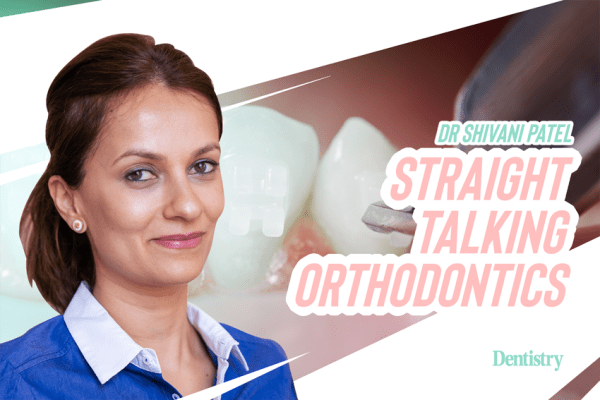In the first of the brand new column ‘Straight Talking Orthodontics’, Dr Shivani Patel discusses the ideal targets for achieving static occlusion.
Orthodontics is a specialty which diagnoses and treats abnormalities of the bite and jaws in children and adults. The term ‘orthodontics’ comes from the Greek word ‘orthos’, meaning straight or correct and ‘dontia’ which means relating to teeth.
When treating patients we have many goals. For example, a short treatment time, lack of discomfort for the patient and avoidance of damage to the oral tissues. In terms of tooth positions, there are only two groups of goals: occlusal goals and facial aesthetic goals.
What does straight teeth really mean?
Malocclusion is the technical term for spaced or misaligned teeth which do not fit properly. The word literally means bad bite.
As the awareness and demand of orthodontics increases amongst our population of both adults and children, it is important as a clinician to understand what the term straight teeth really means. Most clinicians focus on what is visible when you smile, and that is usually the front six teeth.
However straight teeth should be assessed on the basis of the 32 healthy, working adult teeth arranged correctly in the upper and lower jaws. The relationship between all these teeth adjacent and opposing within each jaw should be harmonious, aesthetic and functional.
I appreciate that every patient cannot conform to the ideal or perfect dental arrangement because of the differences into the shape, size, bone structure and racial characteristics.
However as professionals we have to agree that there is no normal because of this variability. In addition, when analysed from different viewpoints there are at least six key features that need to be demonstrated. This is so that we can be satisfied that our patients have straight, functional teeth and great longevity.
Frontal view
Let’s start with the midline. Ideally this should be coincidental dentally and with the facial midline viewed from the front or above the patient. Centrelines vary in patients with lower jaw asymmetries, early loss of deciduous teeth causing drifting of teeth, asymmetric tooth loss or hypodontia.
When measuring the facial midline, beware that the nasal septum is not deviated. If it is, measure from the middle of the forehead. Discrepancies of the midline are not detectable until the midline is off by four millimetres. Lower centreline discrepancies are often not seen as they are hidden by the lower lip.
There is also a smile zone that exists between the canines. All the anterior teeth should appear within the lips when you smile. All the teeth should appear in both zones be in a balanced relationship with each other.
Contrary to popular belief of our patients, the biting edges of the teeth should not be straight. It is perfectly natural for the front edges of the teeth to form a contour pattern.
The presence of the contour pattern enables us to distinguish between patients who have machine dentures or ill design veneers and somebody with a natural look. The ideal relationship between the front teeth should be stepwise with the central lateral and canines at different levels both at the incisal edge and at the gum level.
Dental arches
Dental arches should both be balanced and symmetrical in an ideal scenario.
Teeth should be well aligned with no spaces and rotations. However this is not achievable in patients with tooth size and shape differences and bone structure.
There will also be differences in dental arch shape and size if patients have skeletal discrepancies, cross bites, scissor bites or missing teeth. In addition, patients may have had teeth extracted if orthodontics caused the arches to narrow.
Buccal view
When viewing your patient’s teeth from the buccal aspect in static occlusion, you should have a good interdigitation.
Ideally, they should be in a class one relationship. Research has shown a class one occlusion has the most occlusal contact between surfaces compared with a class two or class three group.
In addition, research shows that well intercuspated teeth may be more stable and desirable.
Overbite
This is the relationship with the upper teeth in a vertical direction.
The upper teeth should ideally cover no more than 30% of the lower teeth. If there is no overbite, we call this an ‘anterior open bite’. This means that in occlusion only the posterior teeth are in contact.
This will lead to unnatural wear of the posterior teeth (attrition), breakages of any fillings or restorations, and can also lead to TMJD.
However, if a deep bite occurs due to an increased curve, this causes an excessive vertical overlap of the upper and lower incisor teeth.
As a result, it can lead to the wear of the lower incisor edges. In severe cases, it may also lead to the stripping off the gums palatal to the upper incisors and labial to the lower incisors leading to recession.
Overjet
This is the extent to which the front top teeth protrude past the lower front teeth.
This horizontal distance ideally should be two to four millimetres. However, it depends on a number of factors.
The overjet can be increased if the lower jaw is setback and small or if the upper teeth are protrusive or proclined due to a digit sucking habit.
The overjet can be reduced and the teeth can sit edge to edge or even in a reverse overjet if the lower jaw is protruding forwards due to a skeletal III pattern.
Tooth proportions
Tooth width discrepancies between the arches or between different parts of the same arch may well be an under-recognised cause of the inability for orthodontist to achieve an ideal static occlusion.
The above ideal targets are very hard to achieve if you look closely enough. However, they are a very useful clinical aid to achieving an intercuspal occlusion that would be widely accepted as ideal.
Follow Dentistry.co.uk on Instagram to keep up with all the latest dental news and trends.


